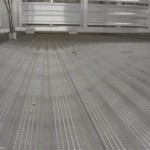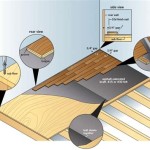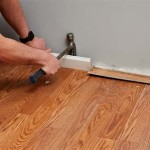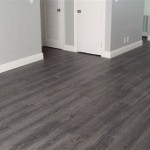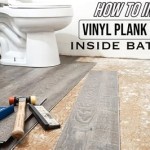Vinyl Plank Flooring: Understanding the Differences
Vinyl plank flooring has emerged as a popular choice for homeowners seeking a durable and stylish flooring option. However, navigating the wide range of vinyl planks available on the market can be daunting. This guide will explore the key differences between various vinyl plank flooring types to help you make an informed decision.
1. Core Materials
The core material of vinyl planks determines their stability, durability, and water resistance. Common core materials include:
- Solid Core: High-density PVC core that provides excellent dimensional stability and resistance to buckling and warping.
- Waterproof Core: Typically made of rigid polymers, these cores are 100% waterproof and suitable for areas prone to moisture.
- Composite Core: A combination of solid and engineered materials, offering a balance of stability and moisture resistance.
2. Wear Layer
The wear layer is the protective top layer that resists scratches, stains, and wear. The thickness of the wear layer is measured in mils, with higher mils indicating greater durability. Typical wear layer thicknesses range from 6 to 20 mils.
3. Texture and Finish
Vinyl planks come in a variety of textures, from smooth to embossed, and finishes, such as matte or glossy. Embossed textures mimic the grain of natural hardwood, while smooth textures provide a more contemporary look. Finishes can affect the appearance and feel of the flooring.
4. Water Resistance
Water resistance is an important consideration for areas prone to moisture or spills. Not all vinyl planks are created equal. Solid core and waterproof core planks offer superior water resistance compared to traditional vinyl planks.
5. Installation Methods
Vinyl planks can be installed using different methods:
- Click-Lock: Planks lock together for a floating installation, requiring no glue.
- Glue-Down: Adhesive is applied to the subfloor, and planks are adhered directly to it.
- Loose-Lay: Planks are placed directly on the subfloor without any adhesive or locking mechanisms.
Conclusion
Understanding the differences between vinyl plank flooring types is crucial for selecting the ideal flooring for your needs. Consider the core material for stability and durability, the wear layer for resistance to wear, the texture and finish for aesthetics, the water resistance for moisture-prone areas, and the installation method for ease of installation.
By weighing these factors and selecting the right vinyl plank flooring, you can create a beautiful, functional, and durable floor that will enhance the value and comfort of your home.

What S The Difference Between Vinyl And Laminate Flooring Igloo Surfaces

Porcelain Wood Look Tile Vs Luxury Vinyl Plank An Honest Comparison

Laminate Vs Vinyl Flooring Guide

Vinyl Plank Vs Laminate Flooring Which Is Right For You Onflooring

Laminate Vs Vinyl The Home Depot

Which One To Choose Spc Or Vinyl Flooring Kaltimber Timber Merchant

Laminate Vs Hardwood Vinyl Flooring 50floor

Sheet Vinyl Vs Tile Flooring Comparison Guide Floorcon

Luxury Vinyl Plank Vs Laminate What S The Difference

Vinyl Vs Laminate Flooring Which One Should You Use Easiklip Floors
Related Posts

